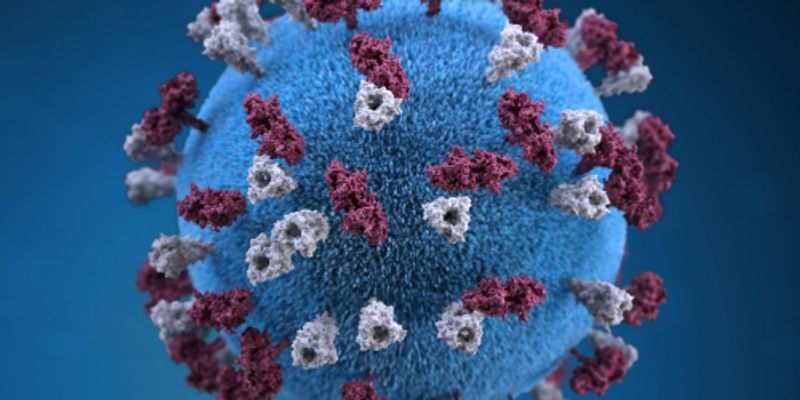Viral Genomics
Viral genomics uses advanced analytical technologies to study the biology of disease-causing viruses at a genetic level. The aim of viral genomics is to better understand how viruses interact with their hosts and how infections spread through communities. This enables drug and vaccine development efforts as well as informing public health policies.
-
OCT 05, 2016 | 6:00 AMMelanoma arises in the pigment producing cells (melanocytes) and is the deadliest of the skin cancers. It accounts for nearly 200,000 new cases of cancer each year worldwide and in the U.S. o...Speaker: Louise Perkins, PhDSEP 08, 2016 | 12:00 PMThis presentation will be demonstrating several different approaches to explore the diversity, function, and ecology of microbial communities. In Metagenomics, the sequencing of DNA dir...SEP 08, 2016 | 7:30 AMThe Infectious Diseases Pathology Branch of the Centers for Disease Control and Prevention (CDC) routinely receives autopsy and biopsy tissues for diagnostic evaluation. These tissues are typ...SEP 07, 2016 | 1:30 PMIt is well accepted that microorganisms can exist as self-organized communities attached to surfaces and one another (i.e., biofilm), often surrounded by extracellular polymeric substances (E...SEP 07, 2016 | 7:30 AMDespite FDA-approved vaccines and antivirals, seasonal and pandemic influenza remains a serious threat associated with substantial morbidity and mortality. The present modalities and va...SEP 07, 2016 | 6:00 AMOxford Nanopore’s MinION is a small sensing device which can sequence DNA and RNA directly, without the need to perform an enzymatic synthesis reaction. The device is portable and is po...SEP 03, 2015 | 12:00 PMOxford Nanopore's MinION is a small, portable USB-powered sensing device which is powered by nanopore technology. It is adaptable to the analysis of DNA, RNA, proteins or small molecules, and...SEP 02, 2015 | 12:00 PMDNASTAR offers an integrated suite of software for accurate assembly and analysis of sequence data for key NGS workflows, including microbial genome assembly. The DNASTAR assembly software is...SEP 02, 2015 | 9:00 AMThe human race, like all macrobiological life, evolved in a sea of microbes. There was no way to keep the bacterial and archaeal hoards at bay, so instead life evolved mechanisms to live with...SEP 02, 2015 | 6:00 AMManaging microbial contaminants is critical during the manufacturing of biologics, food and beverage to ensure that products meet the high quality product standard as well as staying complian...SEP 02, 2015 | 6:00 AMAmong many surprising insights, the genomic revolution has helped us to realize that we're never alone and, in fact, barely human. For most of our lives, we share our bodies with some ten ti...MAY 12, 2015 | 8:00 AMPlease click here to watch this webinar On DemandsiRNA-mediated silencing of gene expression has revolutionized the study of biology by enabling rapid and unbiased loss-of-function studies to...AUG 21, 2014 | 9:45 AMAccurate and timely diagnosis of rejection and infection is essential for long-term survival of solid-organ transplant recipients. We evaluated the performance a novel test to monitor rejecti...MAY 30, 2014 | 10:30 AMThere is growing pressure to implement new generation sequencing platform in hospital emergency rooms. The utility would be obvious: identifying unknown pathogens form cerebrospinal fluid/pl...Speaker: Ivan Brukner, PhDAUG 21, 2013 | 1:00 PMCervical cancer screening has evolved significantly since the PAP smear was introduced in 1949. In particular, the association with human papillomavirus (HPV) infection and the mechanism of H...AUG 21, 2013 | 9:00 AMPersonalized medicine is expected to benefit from the combination of genomic information with the global monitoring of molecular components and physiological states. To ascertain whether this...AUG 21, 2013 | 6:00 AMA 2013 survey conducted by the Woodrow Wilson Synthetic Biology Project found that 75% of adults have heard just a little or nothing at all about synthetic biology, figures that were virtuall...
OCT 05, 2016 | 6:00 AM
Melanoma arises in the pigment producing cells (melanocytes) and is the deadliest of the skin cancers. It accounts for nearly 200,000 new cases of cancer each year worldwide and in the U.S. o...
Speaker:
Louise Perkins, PhD
SEP 08, 2016 | 12:00 PM
This presentation will be demonstrating several different approaches to explore the diversity, function, and ecology of microbial communities. In Metagenomics, the sequencing of DNA dir...
SEP 08, 2016 | 7:30 AM
The Infectious Diseases Pathology Branch of the Centers for Disease Control and Prevention (CDC) routinely receives autopsy and biopsy tissues for diagnostic evaluation. These tissues are typ...
SEP 07, 2016 | 1:30 PM
It is well accepted that microorganisms can exist as self-organized communities attached to surfaces and one another (i.e., biofilm), often surrounded by extracellular polymeric substances (E...
SEP 07, 2016 | 7:30 AM
Despite FDA-approved vaccines and antivirals, seasonal and pandemic influenza remains a serious threat associated with substantial morbidity and mortality. The present modalities and va...
SEP 07, 2016 | 6:00 AM
Oxford Nanopore’s MinION is a small sensing device which can sequence DNA and RNA directly, without the need to perform an enzymatic synthesis reaction. The device is portable and is po...
SEP 03, 2015 | 12:00 PM
Oxford Nanopore's MinION is a small, portable USB-powered sensing device which is powered by nanopore technology. It is adaptable to the analysis of DNA, RNA, proteins or small molecules, and...
SEP 02, 2015 | 12:00 PM
DNASTAR offers an integrated suite of software for accurate assembly and analysis of sequence data for key NGS workflows, including microbial genome assembly. The DNASTAR assembly software is...
SEP 02, 2015 | 9:00 AM
The human race, like all macrobiological life, evolved in a sea of microbes. There was no way to keep the bacterial and archaeal hoards at bay, so instead life evolved mechanisms to live with...
SEP 02, 2015 | 6:00 AM
Managing microbial contaminants is critical during the manufacturing of biologics, food and beverage to ensure that products meet the high quality product standard as well as staying complian...
SEP 02, 2015 | 6:00 AM
Among many surprising insights, the genomic revolution has helped us to realize that we're never alone and, in fact, barely human. For most of our lives, we share our bodies with some ten ti...
MAY 12, 2015 | 8:00 AM
Please click here to watch this webinar On DemandsiRNA-mediated silencing of gene expression has revolutionized the study of biology by enabling rapid and unbiased loss-of-function studies to...
AUG 21, 2014 | 9:45 AM
Accurate and timely diagnosis of rejection and infection is essential for long-term survival of solid-organ transplant recipients. We evaluated the performance a novel test to monitor rejecti...
MAY 30, 2014 | 10:30 AM
There is growing pressure to implement new generation sequencing platform in hospital emergency rooms. The utility would be obvious: identifying unknown pathogens form cerebrospinal fluid/pl...
Speaker:
Ivan Brukner, PhD
AUG 21, 2013 | 1:00 PM
Cervical cancer screening has evolved significantly since the PAP smear was introduced in 1949. In particular, the association with human papillomavirus (HPV) infection and the mechanism of H...
AUG 21, 2013 | 9:00 AM
Personalized medicine is expected to benefit from the combination of genomic information with the global monitoring of molecular components and physiological states. To ascertain whether this...
AUG 21, 2013 | 6:00 AM
A 2013 survey conducted by the Woodrow Wilson Synthetic Biology Project found that 75% of adults have heard just a little or nothing at all about synthetic biology, figures that were virtuall...
















